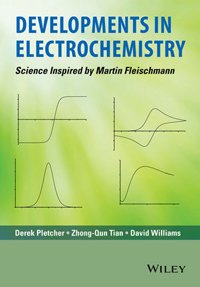
Current Science is a science journal based in India and Edited by R. Srinivasan of the Indian Institute of Science. India had a large number of people investigating the Fleischmann-Pons Effect early on, including Mahadeva Srinivasan and the team at Babha Atomic Research Center (BARC). But difficulties in reproducing the effect proved too much. Today, there is no support for research by official agencies in India.
In the online Special Section on Low Energy Nuclear Reaction, uncorrected proofs of featured articles awaiting publication in the next print issue of Current Science are available:
http://www.currentscience.ac.in/cs/php/fcarticles.php

There is also a lesson for students of cold fusion:
How does one proceed as a thoughtful intelligent person
simply wanting ‘to know the truth (see note 4)’, but
not having years to devote to experimental studies or
literature review? I would suggest beginning with Storms’
books as resources to identify sub-topic areas of personal
interest and pointers to primary sources for further
study. Obviously, I have neither the time, patience nor
space to emulate Storms’ efforts here. I restrict attention
to the conclusions arrived at ‘long ago’ in the deluge of
information achieved hurriedly in the biblical 40 days and
40 nights leading up to the 1 May 1989 APS meeting.
The conclusion and ‘voted consensus’, that Fleischmann
and Pons had made fundamental errors and elementary
mistakes, was itself premature and in error. This leaves
wide open the possibility that our free-space view of
nuclear physics requires extension in potentially interesting
directions.
Professor Peter Hagelstein and Dr. Mitchell Swartz created the IAP MIT short course Cold Fusion 101 which ran Jan. 21-24, 2015 from the campus of Massachusetts Institute of Technology. Jeremy Rys has attended the lectures since they began three years ago, and this year, Livestreamed from his laptop in the front row. Along with Gayle Verner, they contributed Summary report: ‘Introduction to Cold Fusion’ – IAP course at the Massachusetts Institute of Technology, USA [.pdf].
From the Introduction:
WHILE the Massachusetts Institute of Technology (MIT),
USA, officials still reportedly do not recognize cold
fusion or its viability, the fact that it has entered the academic
domain, albeit through the less-structured IAP
agenda, is certainly noteworthy, both for those scientists
working for its public acknowledgement and for the
appearance of a place to go and get an education in
this field. Twenty-five years later, one can now walk into
an MIT classroom, listen to an academic lecture on the
subject, and learn that the phenomenon is real and reproducible.
For an article entitled Condensed matter nuclear reaction products observed in Pd/D co-deposition experiments, authors include P. A. Mosier-Boss, L. P. Forsley, F. E. Gordon, D. Letts, D.Cravens, M. H. Miles, M. Swartz, J. Dash, F. Tanzella, P. Hagelstein, M. McKubre and J. Bao.
Descriptions of the various types of cells used by these veteran experimentalists showed a strong effect from the co-deposition method, first applied to cold fusion by Navy electro-chemist Dr. Stan Szpak, and created one of the more easily reproducible types of cells available.
From the conclusion of the paper:
… several researchers have used Pd/D codeposition
to investigate the phenomenon of condensed
matter nuclear reactions within a Pd lattice. The emphasis
of many of these investigations has been on heat production.
In these particular experiments, excess heat has been
measured using different variations of co-deposition as
well as different kinds of calorimeters, both open and
closed. In addition to heat, other reaction products that
have been observed include new elements, tritium, energetic
particles and neutrons.
Contents of Special Section: Low Energy Nuclear Reactions
(which may be different from the print publication)
Cold fusion: comments on the state of scientific proof
Michael C. H. McKubre
Selective resonant tunnelling – turn the hydrogen-storage material into energetic material
C. L. Liang, Z. M. Dong and X. Z. Li
Highly reproducible LENR experiments using dual laser stimulation
Dennis Letts
Condensed matter nuclear reaction products observed in Pd/D co-deposition experiments
P. A. Mosier-Boss, L. P. Forsley, F. E. Gordon, D. Letts, D. Cravens, M. H. Miles, M. Swartz, J. Dash, F. Tanzella, P. Hagelstein, M. McKubre and J. Bao
Use of CR-39 detectors to determine the branching ratio in Pd/D co-deposition
P. A. Mosier-Boss, L. P. G. Forsley, A. S. Roussetski, A. G. Lipson, F. Tanzella, E. I. Saunin, M. McKubre, B. Earle and D. Zhou
Observation and investigation of anomalous X-ray and thermal effects of cavitation
V. I. Vysotskii, A. A. Kornilova and A. O. Vasilenko
Transmutation reactions induced by deuterium permeation through nano-structured palladium multilayer thin film
Yasuhiro Iwamura, Takehiko Itoh and Shigenori Tsuruga
Biological transmutations
Jean-Paul Biberia
Microbial transmutation of Cs-137 and LENR in growing biological systems
V. I. Vysotskii and A. A. Kornilova
Energy gains from lattice-enabled nuclear reactions
David J. Nagel
Summary report: ‘Introduction to Cold Fusion’ – IAP course at the Massachusetts Institute of Technology, USA
Gayle Verner, Mitchell Swartz1 and Peter Hagelstein
Condensed matter nuclear science research status in China
Z. M. Dong, C. L. Liang and X. Z. Li











